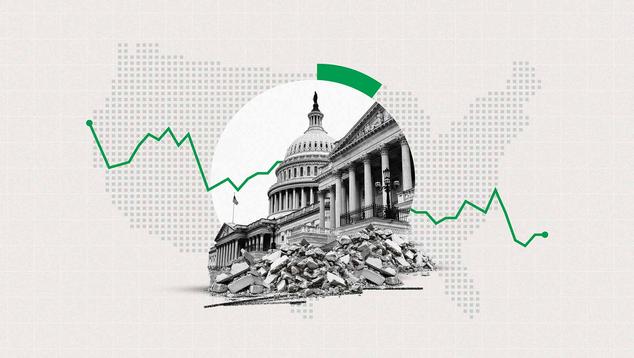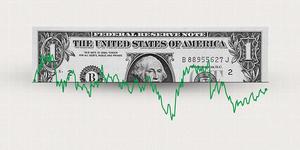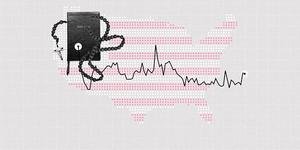WASHINGTON, D.C. — Americans' average confidence in major U.S. institutions is unchanged since last year, with a near-record-low 28% of U.S. adults expressing "a great deal" or "quite a lot" of confidence in nine institutions tracked consistently since 1979. This is the fourth consecutive year of sub-30% averages, but this overall stability belies significant shifts in partisans’ confidence after Donald Trump replaced Joe Biden as president.
On average across these nine institutions, Democrats’ confidence, at 26%, has decreased by five percentage points and sits at a new low, while Republicans’ 37% reflects an increase of nine points and is the highest reading since 2020. Partisans’ confidence levels diverge the most on the presidency and the police, with Republicans much more confident than Democrats in each.
More generally, of 18 key U.S. institutions included in this year’s survey, just three earn majority-level confidence from Americans — small business, the military and science.
Democrats’ Average Confidence Down, Republicans’ Up Sharply
Gallup first measured confidence in key U.S. institutions on a limited number of institutions in 1973. Since 1979, the nine institutions that have been tracked regularly include the church or organized religion, the military, the U.S. Supreme Court, banks, public schools, newspapers, U.S. Congress, organized labor and big business.
This year marks only the second time that Democrats’ average confidence has fallen below 30% (2023 was the first), while Republicans’ average bottomed out during Biden’s presidency, ranging from 26% to 30%.
The current 11-point party gap (37% vs. 26%) is the largest in 46 years of consistent measurement; however, partisans’ confidence in U.S. institutions was also sharply divergent in 2007, during George W. Bush’s second term (nine points).
For their part, independents’ current 25% average confidence level is statistically similar to the past three years’ figures, suggesting their confidence is much less contingent on which party controls the White House.
Five other institutions have been measured annually since the early 1990s: the presidency, the criminal justice system, the police, the medical system and television news. The current national average including these five institutions is also 28%, and the averages by party are 41% among Republicans and 24% among both Democrats and independents.
The slightly larger party gaps for the 14 institutions measured since 1993 versus the nine measured since 1979 are largely attributable to the partisan gaps in confidence in the presidency, which vary widely, depending on whether the president is a Democrat or a Republican.
Republican Confidence in President, Military, Police Increased Most
Gallup’s latest survey, conducted June 2-26, included four institutions that have shorter trend lines: small business, higher education, science and large technology companies, with science the only one that was not measured last year.
Republicans’ confidence in most of the 17 institutions has increased significantly since 2024. The largest increases were for the presidency (+73 points), the military, and the police (+18 points each). The only institution that did not engender the same amount of or more confidence from Republicans this year than last is the U.S. Supreme Court, which has a 6-3 conservative majority.
Meanwhile, Democrats’ confidence decreased the most for the same institutions that saw the greatest increases among Republicans — the presidency (-58 points), the military (-21) and the police (-16). The criminal justice system, large technology companies and newspapers also saw double-digit declines in confidence from Democrats this year. Democrats’ confidence rose in only two institutions, both related to education — higher ed and public schools. The other institutions held steady or garnered less confidence this year than in 2024.
Aside from a 12-point decrease in confidence in the police among independents, changes were in the single digits and generally more modest than for the other party groups.
Americans Have Most Confidence in Small Business, Military, Science
As noted, majorities of all U.S. adults express “a great deal” or “quite a lot” of confidence in just three institutions — small business (70%), the military (62%) and science (61%). The lowest-rated institutions are Congress and television news, each receiving confidence ratings around 10%. Slim majorities have “very little” confidence or volunteer that they have no confidence in Congress and television news, along with the presidency. However, the presidency’s 30% confidence rating reflects dramatically different views of it by partisans, who tend to have either high confidence or little to no confidence in it.
Small business or the military has held the top position in Gallup’s confidence list since 1989, and Congress has been at the bottom since 2010.
Confidence in Police Dips Back Near Low Point in Trend
The significant party shifts in confidence this year largely cancel each other out in the aggregate, and thus, Americans’ confidence in most institutions is unchanged or statistically similar to last year. The only exceptions are higher education, which is up six points, and the police, which is down by the same amount after rebounding last year.
Americans’ confidence in the police has averaged 55% since 1993 but has been below that level since 2018. The low point in the trend is 43% in 2023.
Confidence in the police differs not only by party identification but also by racial group. The racial divide in confidence in the police is the largest for any institution, with 52% of White adults and 24% of Black adults expressing confidence in it. Among Black adults, confidence is only slightly higher now than the 19% reading recorded in 2020 after George Floyd’s murder by a police officer. However, it is statistically similar to the 27% reading in 2021, the last time Gallup included an oversample of Black respondents in its Confidence in Institutions survey.
Confidence in the presidency and the military also shows large racial divides, of 25 and 20 points, respectively.
Implications
Americans’ confidence in major U.S. institutions remains near a record low, and partisan divisions have shifted again in the second Trump presidency.
These large partisan shifts that occur under new presidential administrations underscore an important point amid the larger declines in confidence in institutions. While the loss of faith in in key U.S. institutions may be hard to ever recover among political independents, partisans’ confidence is easily restored when their political party controls the institution. The flip side, of course, is that the confidence of the other party’s supporters declines when their party loses power. This suggests that confidence in U.S. institutions may be less about how well the institution performs its societal functions and more about who has the power to influence what the institution can do.
Stay up to date with the latest insights by following @Gallup on X and on Instagram.
Learn more about how the Gallup Poll Social Series works.
View complete question responses and trends (PDF download).




